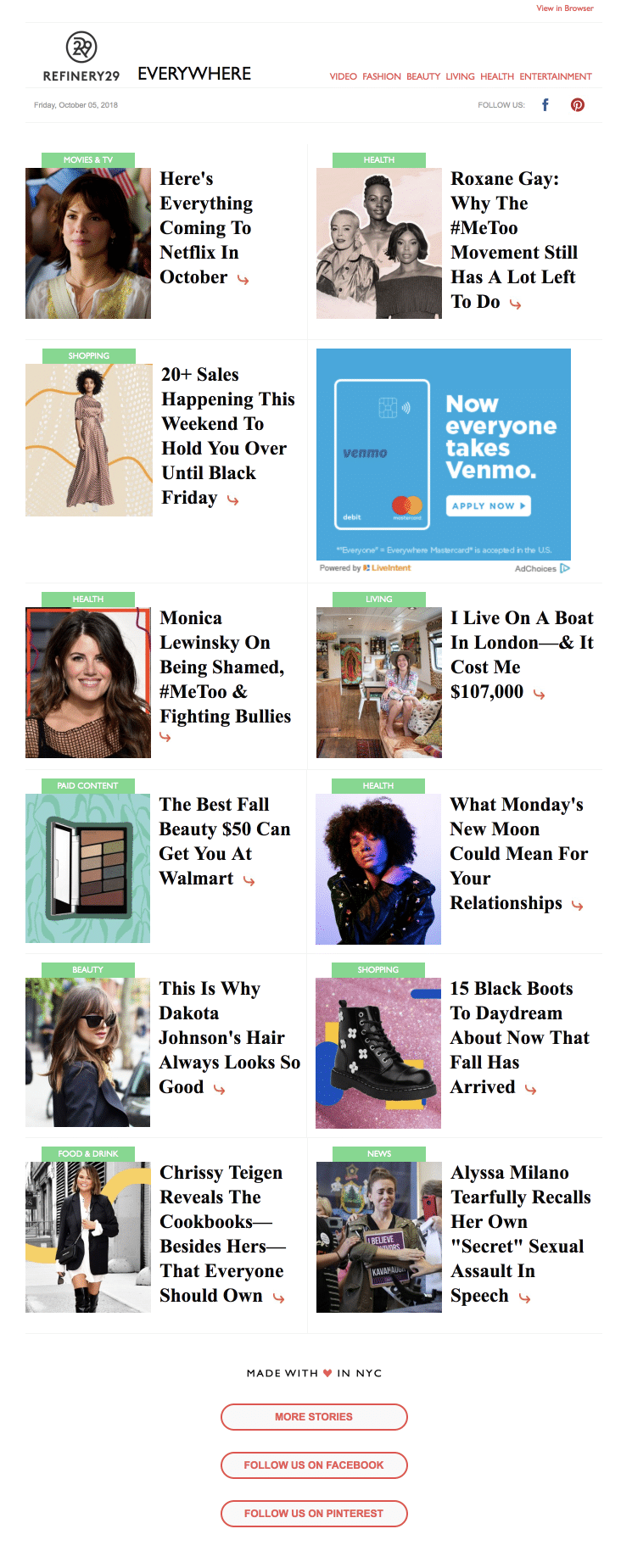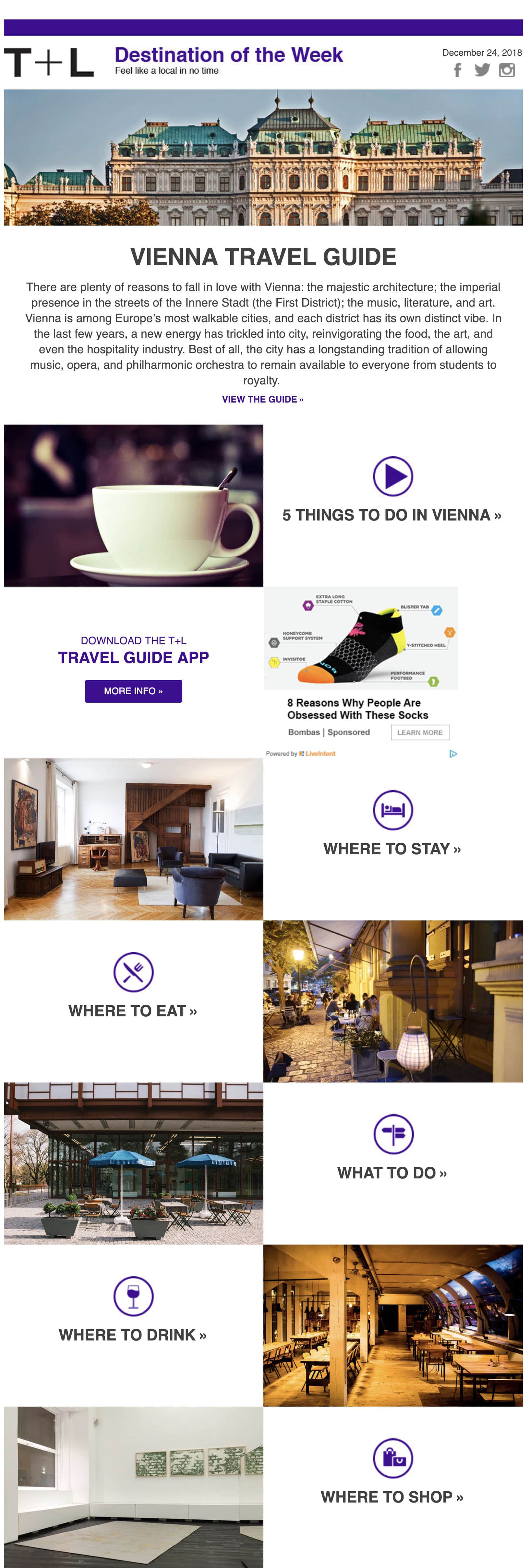Part
01
of one
Part
01
Email Newsletter Best Practices
Details for email newsletter best practices are provided below with descriptions of the practice, how and why it's considered a best practice, and an example of a company implementing the best practice.
This report will show the best practices include adding white space, including only relevant links, and using action-oriented copy.
BEST PRACTICES
1) Add White Space
- White space is often referred to as negative space in email design. As a design element, it helps create a well-balanced design that moves away from a cluttered layout by allowing images and copy to stand out.
- It is considered a best practice because it allows users to feel less overwhelmed when a newsletter contains a lot of copy. By utilizing white space other elements of email stand out more and the readability is greatly improved for readers.
- In fact, research by Wichita State University found that white space provides a vacation for the eyes, balancing advertisements on a website or page. The study found that 90% of participants preferred pages that utilized white space compared to those that do not.
- An example of a company effectively utilizing white space while ensuring blocks are clearly defined is Refinery29.
2) Include Only Relevant Links
- Including only relevant links that are valuable to the reader translates into more click-throughs by allowing subscribers to save time when reading an email so they can easily choose what they would like to read more about.
- A good rule of thumb is to have fewer than 11 links. A study by Constant Contact found that after 5-7 links, additional links result in minimal additional click-throughs. Additionally, a separate study by Campaign Monitor found that increasing the number of unique links and URLs has a strong positive effect on click-through rate until one reaches 11. Thereafter, click-through rate plateaus.
- An example of a company effectively using 7 links while keeping each distinct, relevant, and surrounded by white space is Travel and Leisure.
3) Use Action-Oriented Copy
- Action-oriented copy involves using striking, and actionable text that draws subscribers in and prompts them to act. This involves creating targeted CTA's especially in circumstances that require more than one CTA.
- According to a study by Unbounce, single CTA's are usually best resulting in 371% more clicks compared to those with multiple calls to action. However, for multiple content-heavy CTA's, a good rule of thumb is to have a primary button with smaller secondary options.
- An example of a company utilizing action-oriented copy that is clearly defined with multiple CTA's is Nisolo.
Research Methodology
To find details for email newsletter best practices we searched a wide range of marketing publications, news articles, and media articles such as B2Community, HubSpot, CampaignMonitor, Mailpoet, Forbes, and Emarketer. Using this research strategy we were able to find insightful information on best practices for email newsletters however, the information was a bit scarce as it relates to newsletters with many multiple links. The basic rule of thumb from many articles is to avoid multiple links as they may be confusing and overwhelming to readers however, the niche publications included in the report highlighted that it is possible to find a good balance between many links and effective copy.


